Indoor Grow Light System for Vegetable Seedlings
Published
Preamble: Last Year (2017)
Last year my girlfriend and I had a vegetable garden where we grew tomatoes, eggplants, peppers, broccoli, and a few other smaller things like garlic, carrots, and radishes. Several of the plants started indoors as seedlings for 5-6 weeks. Our indoor grow setup wasn’t as official as it could have been, and can be summarized as a few desperate seedlings huddling around not enough light:
The seedlings did just fine despite their non-ideal upbringing, and were eventually transplanted into the garden space we cleared out in our backyard.
I still have a few things to learn about trimming back over-zealous tomato plants and fighting against beetles/slugs that like to munch of broccoli leaves. We did have a few good harvests that kept us going:
Take Two: This Year (2018)
Fast forward to winter of 2018; we decided to make another run at the garden. This time around we decided to build a more official indoor grow set up, with more space and more light for the seedlings. After all was said an done, we ended up with the following setup – modest to start, but with plenty of room for expansion in the future:
Shopping List
I found a guide online to use as a starting point, but we ultimately ended up needing the following items:
- Commercial Wire Shelf – $90 on Amazon
- 2 48in T8 Shop Lights (32W, 120V) – $35 each on Amazon
- 2 48in T8 3000K Florescent Bulbs (Warm) – $12 each on Amazon
- 2 48in T8 4100K Florescent Bulbs (Cool) – $4 each at Batteries & Bulds
- Mechanical Light Timer – $6 at Target
- 12 ft of chain from our local hardware store
- Surge Protector
A Note About Grow Lights
Sun light is ideal for plants because throughout the day it exposes plants to the full spectrum of color, ranging from infrared (red) to ultraviolet (blue). I spent a lot of time researching what kinds of bulbs would be best for replicating this type of light for growing seedlings indoors.

Light Colors in Kelvin, borrowed from this article
The color temperature of light is measured in Kelvin units; bulbs giving off light with 3500K or lower are designated as “Warm”, and have reddish/orange color. Bulbs emitting light with 4000K or more are referred to as “Cool” and have a bluish hue.
For indoor growing, true sunlight can be emulated by using a blend of both “Warm” and “Cool” colored light bulbs. We used one “Warm” and one “Cool” bulb in each of our Shop Light housings.
For more information, I encourage you to check out this article, which goes into more detail on light color and how each spectrum benefits plants.
Assembly
After gathering everything we needed, the time came to put the pieces together. Things were relatively straight forward when it came to building the wire shelves from Amazon.
Snapping the bulbs into place, one “Warm” and one “Cool”, took no time at all. Then it came time to hang the Shop Light housing with the chains we purchased from the hardware store. The Shop Lights came with S hooks, which worked perfectly.
After the lights were installed, we did some minor power cable routing, and duct taped the surge protector vertically onto the shelves. The surge protector was hooked up to the Mechanical Light Time so that we automatically turn on/off the lights. In a pinch, we had to get a 3 prong to 2 prong adapter from Amazon in order for the Surge Protector to fit into the Light Timer outlet.
After all of the research and assembly, our indoor grow setup was complete and ready for the 2018 grow season!
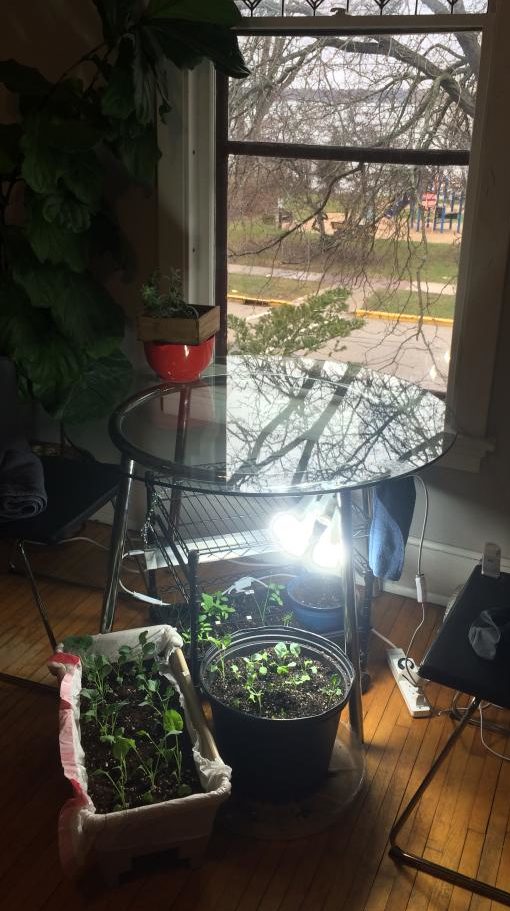
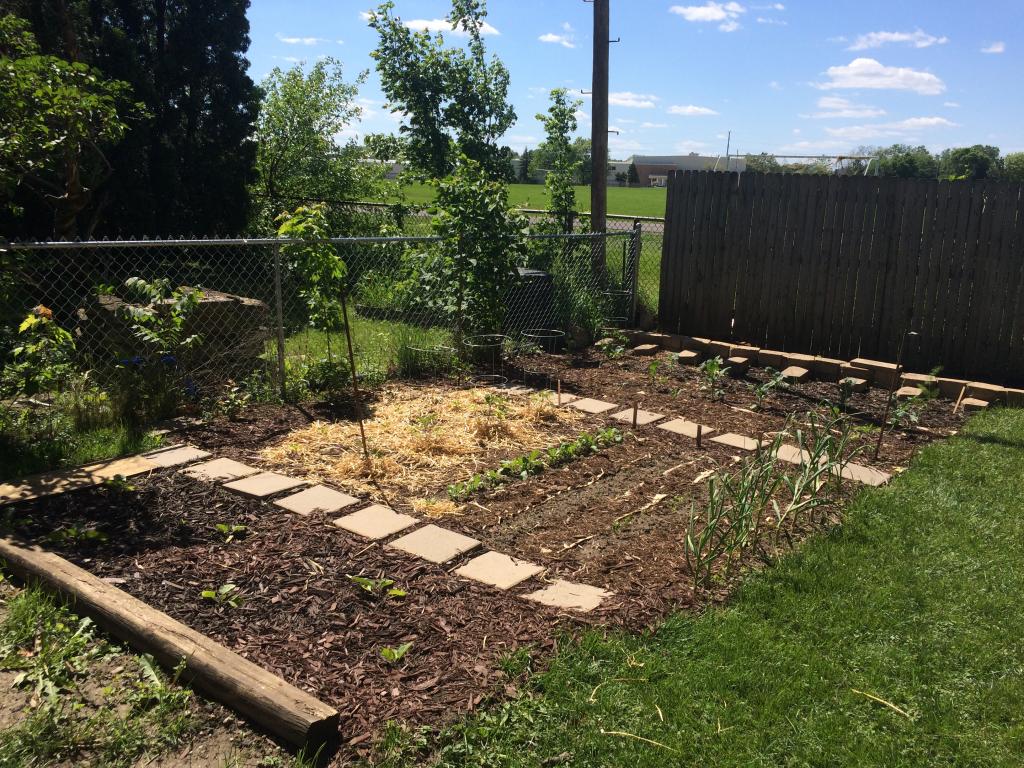
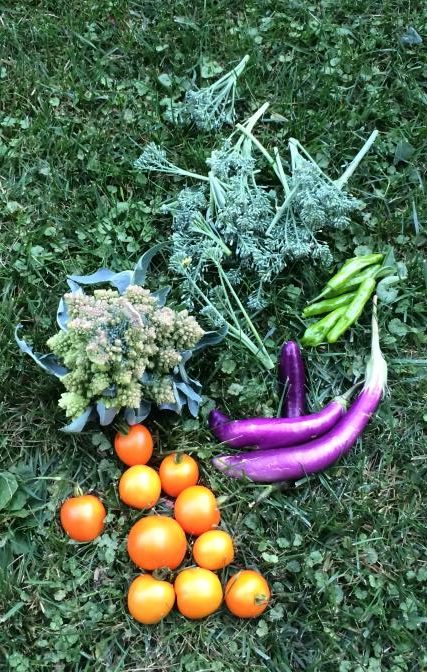
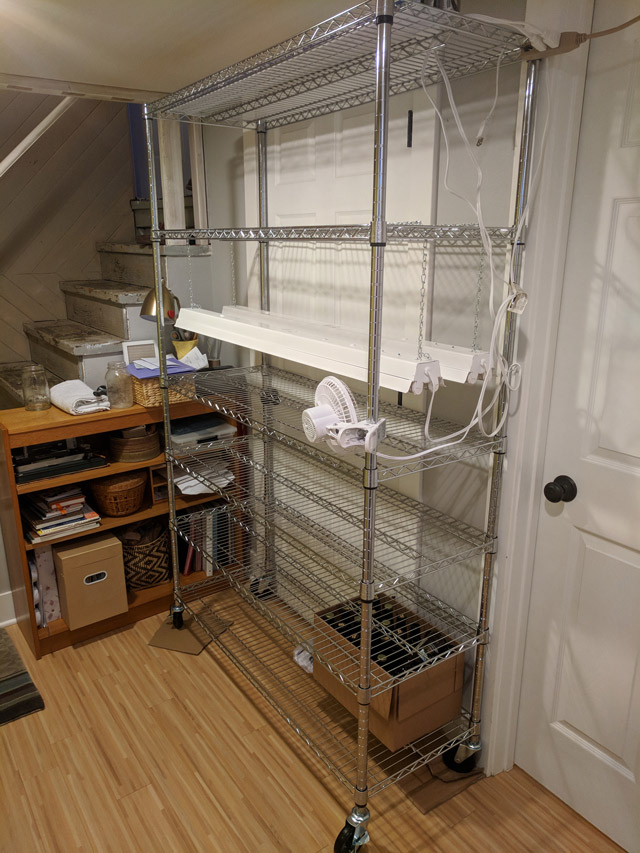
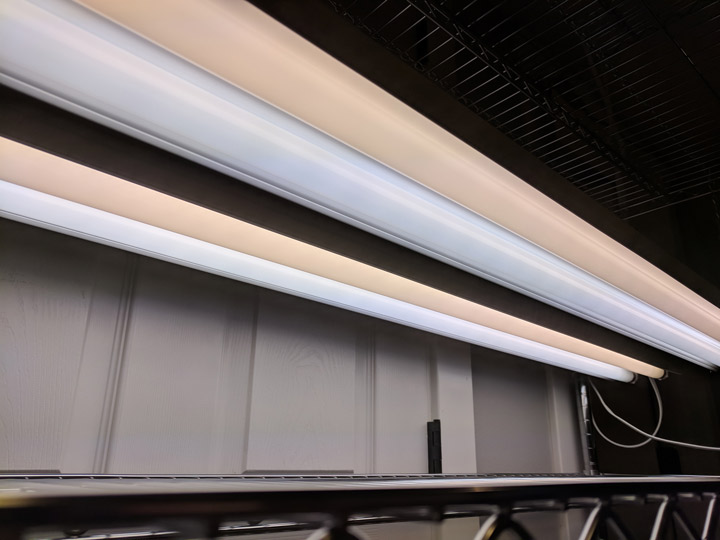
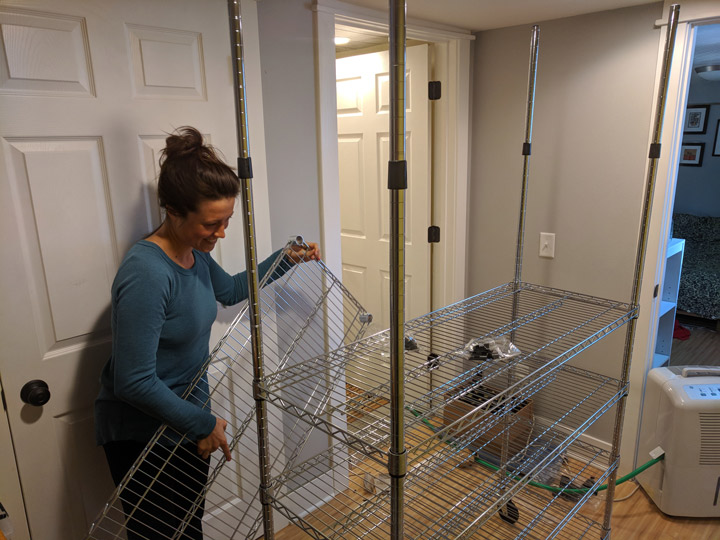
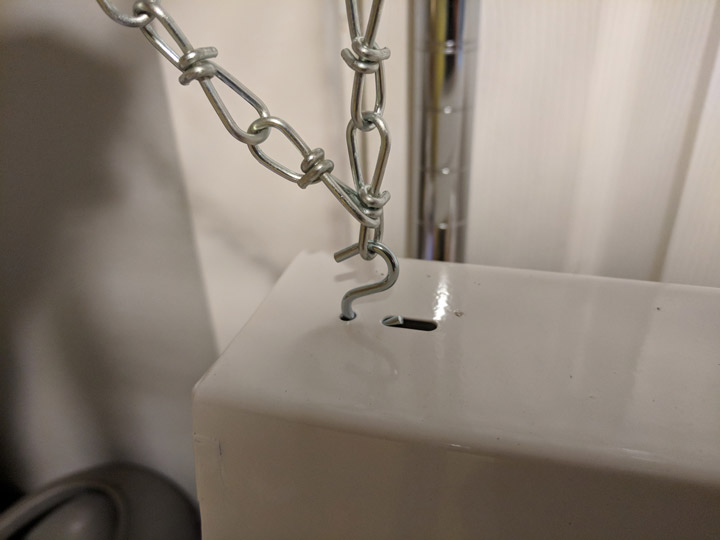
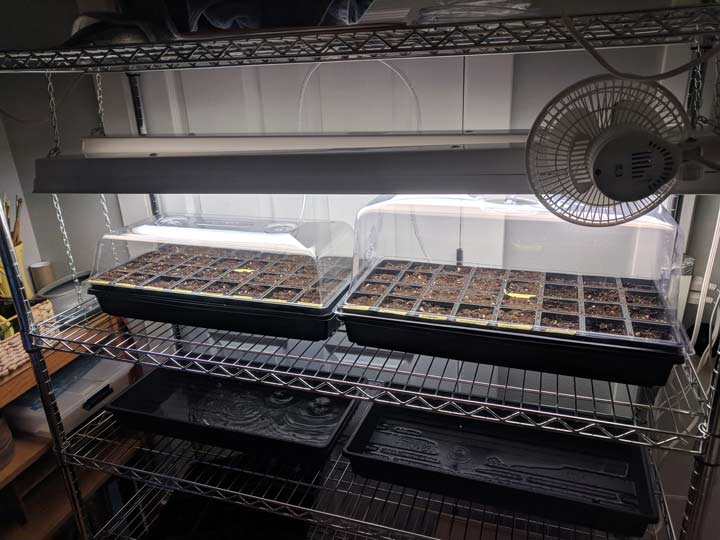
Comments
No responses yet